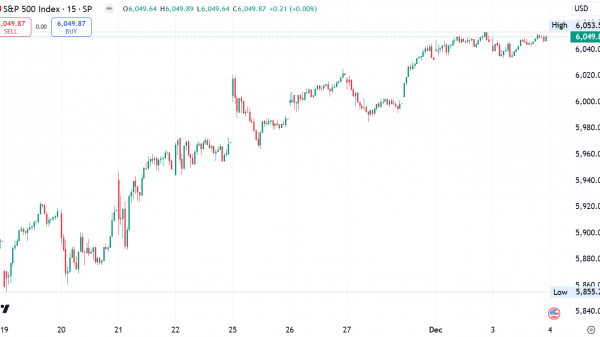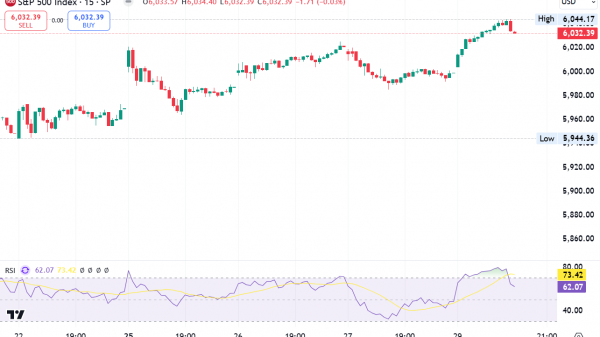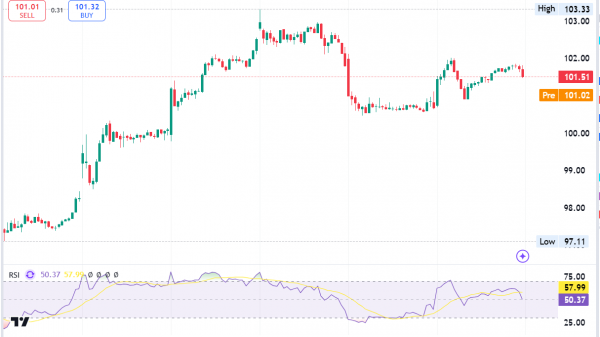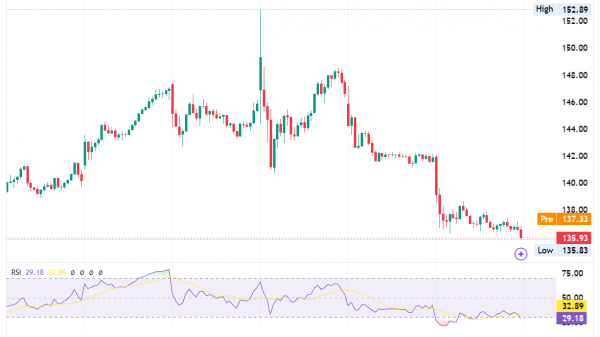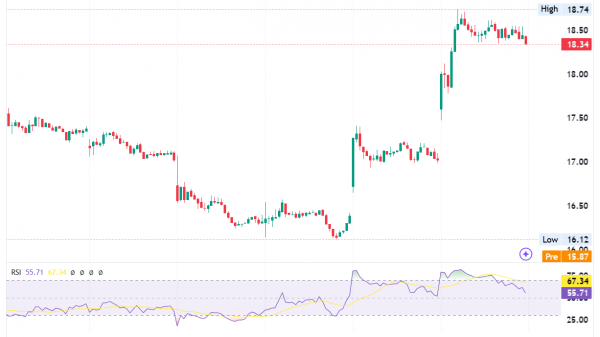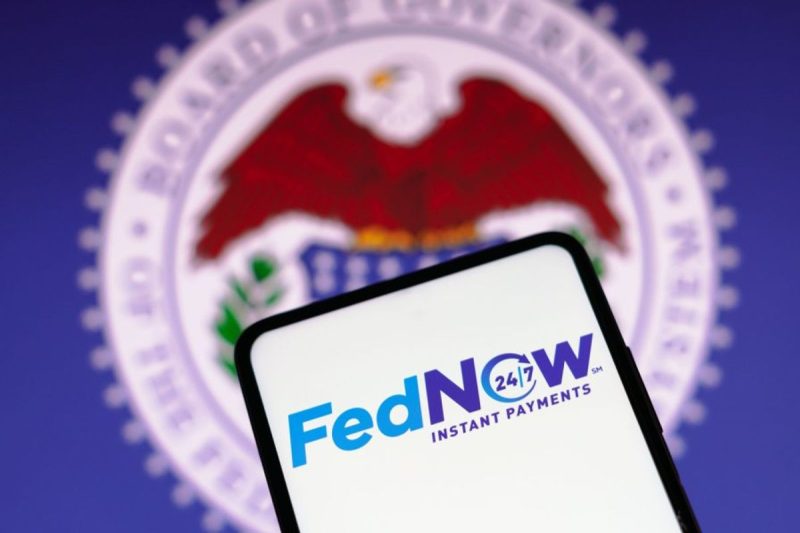Fintech advancements have brought sweeping changes to banking in recent years. The FedNow Service looks set to continue that trend, which is welcome news to some and worrisome to others.
First announced in 2019, FedNow began its soft launch in late July with 41 banks and 15 financial service providers in the initial rollout, including JPMorgan Chase (NYSE:JPM), the Bank of New York Mellon (NYSE:BK) and US Bancorp (NYSE:USB). More banks and credit unions are expected to join the network later this year.
FedNow has been compared to digital payment apps such as Venmo, PayPal (NASDAQ:PYPL) and Zelle, which have grown in popularity in recent years — McKinsey’s 2022 Digital Payments Consumer Survey found that nearly 90 percent of US consumers use digital payments, “and they are engaging with these rapidly evolving solutions in an increasing variety of ways.”
However, as the first digital payment system both created and backed by the US government, the FedNow promises to do much more than any payment app, and that has some people worried. Before we get into that, let’s take a deeper dive into FedNow.
What is FedNow?
Let’s start with what it’s not: FedNow is not a digital currency and it doesn’t use blockchain technology. It’s neither money nor a replacement for money; rather, it is another electronic route through which money can be transferred.
Getting more specific, FedNow is a clearing services platform built on ISO 20022 standards that allows financial institutions of any size to send and receive funds in real time, 24 hours a day and on any day of the year, including bank holidays. This brings the US “in line with countries including the United Kingdom, India, Brazil, as well as the European Union, where similar services have existed for years,” notes Reuters.
This financial platform is for everyone and the plan is to extend this service nationwide. “The Federal Reserve built the FedNow Service to help make everyday payments over the coming years faster and more convenient,” said Fed Chair Jerome Powell. “Over time, as more banks choose to use this new tool, the benefits to individuals and businesses will include enabling a person to immediately receive a paycheck, or a company to instantly access funds when an invoice is paid.”
How is FedNow different from other payment systems?
FedNow differs from peer-to-peer (P2P) payment apps such as Venmo, PayPal and Zelle in that it is not offered directly to consumers, but rather to banks. These aforementioned fintech services act as intermediaries between app users and banks, adding to delays as the banks require time to clear users’ funds.
FedNow erases that wait time by settling accounts directly in central bank accounts, allowing for instant money transfers. According to global business law firm Latham & Watkins LLP, “FedNow can benefit consumers, businesses, and financial institutions with the promise of more flexibility and transparency of payments, improved cash flow and money management, and new customer service solutions.”
The firm says the real-time payment system can be used in numerous transaction types: P2P, account-to-account (A2A), consumer-to-business (C2B), business-to-consumer (B2C), business-to-business (B2B) and government payments.
Essentially, it offers another payment rail in US payment infrastructure. A payment rail is a platform or network that allows digital money transfers between payers and payees. The most commonly used payment rail in the US is currently the Real-Time Payments (RTP) network, which was launched in 2017 by the Clearing House, a payments company owned by big banks such as JPMorgan, Bank of America (NYSE:BAC) and Wells Fargo (NYSE:WFC).
Both RTP and FedNow clear and settle US domestic payments in real time and at any time of year via participating financial institutions and fintech service providers. Some differences between the two are transaction limits and accessibility by smaller banking institutions. While RTP allows for transactions of up to US$1 million, FedNow has a default limit of US$100,000, although financial institutions have the ability to request up to US$500,000.
The fact that FedNow is backed by the Fed offers an extra layer of security over the RTP. Any financial institution eligible to hold accounts at Federal Reserve banks can participate, including those currently using the RTP Network.
However, the biggest difference between the two payment rails is scalability. More than 9,000 financial institutions are eligible to hold accounts at Federal Reserve banks. The RTP, on the other hand, is currently accessible by 300 institutions, with direct connections to 62 percent of US bank accounts.
The sheer size of the network’s potential reach has massive implications over time, not just for the US payments industry but for the US economy as a whole. “The US recorded more than 1.8 billion real-time transactions in 2021. This resulted in cost savings of US$648 million for businesses and consumers, in turn, helping unlock US$1.4 billion of additional economic output,” as per the Fintech Times. “This number will only grow as more banks and organisations sign up for the FedNow service.”
What fees are associated with the FedNow system?
The FedNow system is free to consumers, but financial institutions using the service will incur fees. It’s not yet clear if banks will pass on these costs to their customers.
According to FedNow’s 2023 fee schedule, senders will pay a fee of US$0.045 per credit transfer and return, and a US$1 fee per liquidity management transfer. Additionally, a US$0.01 fee will apply to each request for payment message, and financial institutions will pay a US$25 monthly participation fee. This year, the Fed will waive the monthly participation fee to encourage adoption of the system and will discount the US$0.045 credit transfer fee on the first 2,500 customer credit transfers per month.
What are the downsides of FedNow?
Following the spree of bank failures this past spring, there is real concern that the ability to transfer funds out of accounts so quickly could make for more cataclysmic bank runs in the future. The Fed has countered that banks have adequate stopgap measures in place to curtail heavy outflows.
There are also worries about the ability of the FedNow Service to protect against consumer fraud, notes the legal team at Latham & Watkins. To counter those concerns, the FedNow system will empower banks with the tools needed to recognize and repel fraudulent activity. However, officials say the Fed will not itself have the ability to heavily surveil or seize bank accounts.
Will FedNow lead to a CBDC?
Watch the full interview with Rule above.
Providing examples to back up his concerns, Rule highlighted how the SWIFT banking system was used to “seize or cancel US$200 billion worth of Russian assets” when the country went to war with Ukraine, and discussed how Canadian citizens’ bank accounts were frozen during the Freedom Convoy protest.
Offering a counterpoint, CPM Group’s Christian acknowledged that FedNow is a possible step toward CBDCs, but said he isn’t losing sleep over it. “CBDCs are the next step after that. And they will come — they will be as shocking and disruptive as checking accounts were 100 years ago,” he said. “They reality is that CBDCs are nothing to be afraid of.”
Christian called the idea that FedNow heralds an end to financial privacy “nonsense,” and pointed out that the US government has already had the capability and the chutzpah to monitor, freeze and levy penalties on Americans’ banking activity for decades. “The cat is not only already out of the bag — it’s died of old age,” he quipped.
In response to those voicing their fears about FedNow being a launchpad for CBDCs, the Fed issued a statement on its website explaining that the service “is neither a form of currency nor a step toward eliminating any form of payment, including cash.” The Fed has reiterated that it has no plans to issue a CBDC and would need Congressional approval to do so.
What’s next for FedNow?
Following its initial launch in July, the rollout for FedNow will occur in phases, with a more wide-scale launch planned for 2024. “The Federal Reserve will continue providing certifications to financial institutions and service providers for participation in FedNow, as growing the network is key to increasing availability of instant payments throughout the US,” notes Latham & Watkins.
What will the global impact of the FedNow service be? The clearing platform will no doubt have worldwide implications in the coming years, but for now the service will only support domestic payments transactions. “Nevertheless, a successful FedNow launch could act as a catalyst for the international development of cross-border instant payment programs, promoting innovation and collaboration at a global scale,” explains Srinivas Chintakrinda, senior director of product management at Volante Technologies, a company that provides cloud payment and financial messaging solutions.
Will FedNow spell doom for the fintech industry? The Fed has said FedNow is not meant to compete with fintech apps such as Venmo or PayPal, but rather will collaborate with these private sector financial services. However, as with its global implications, it remains to be seen what impact FedNow will have on the fintech industry. These are early days in the rollout of this new public utility service, and its ability to challenge the private sector will depend greatly on the speed and spread of its adoption.
Interestingly, Volante’s Chintakrinda sees the FedNow launch as “a transformational moment for the fintech industry.” In his view, players in this sector will have a “crucial role to play” in helping the US payments industry and financial institutions to modernize their legacy systems. As it turns out, rather than a death knell, the FedNow may actually be a boon for fintech companies, especially those that specialize in ISO 20022 migration, API technology, cybersecurity and cloud hosting services.
Securities Disclosure: I, Melissa Pistilli, currently hold no direct investment interest in any company mentioned in this article.
















